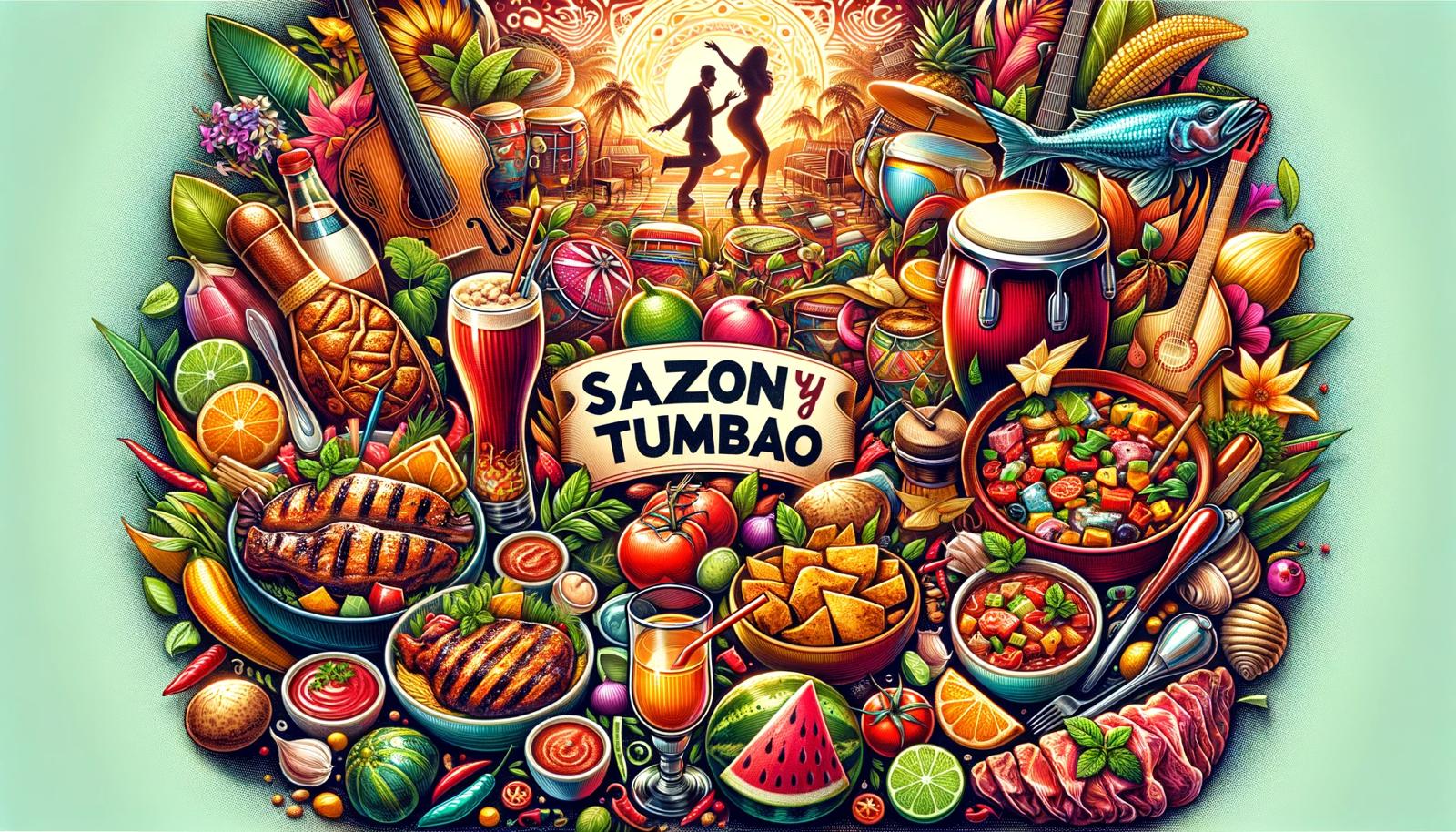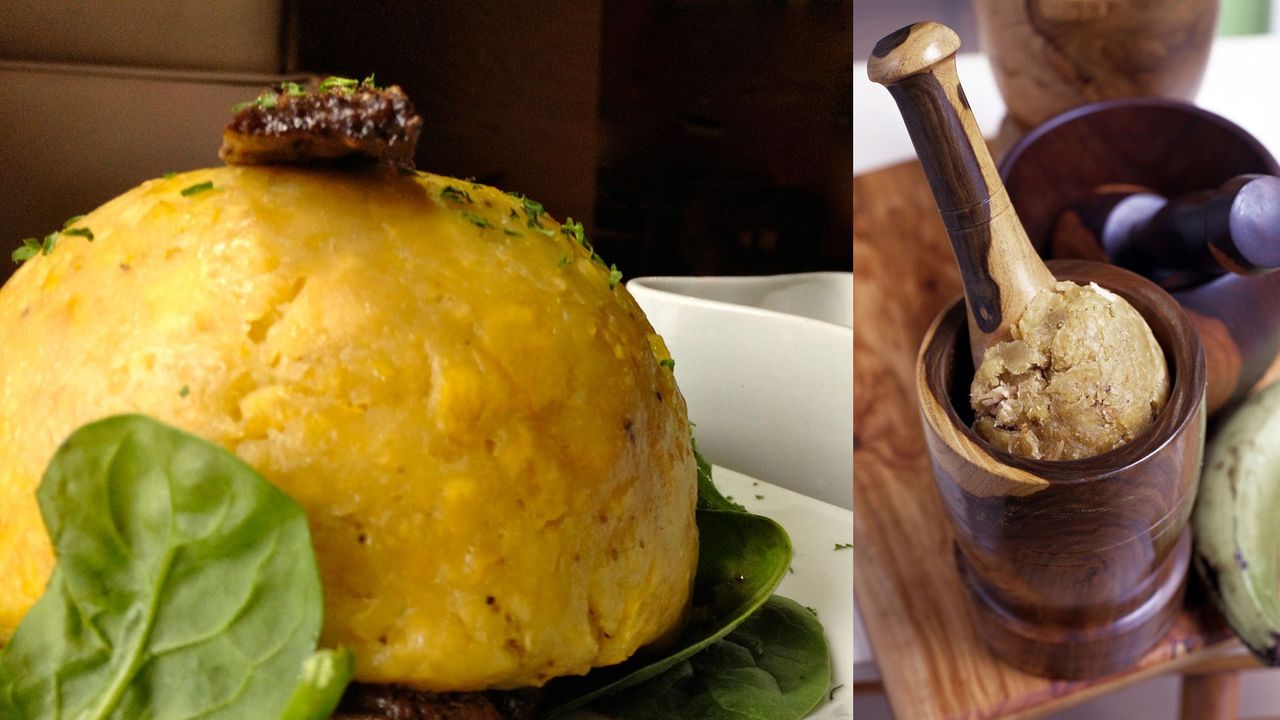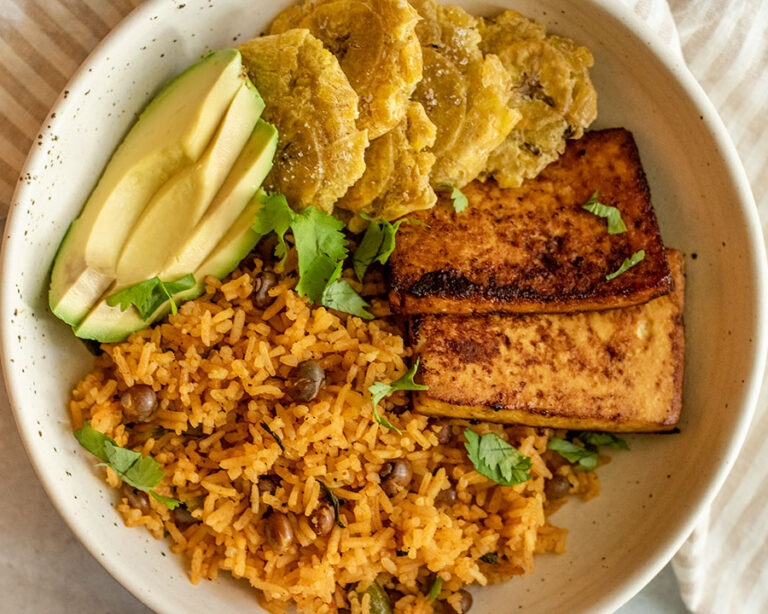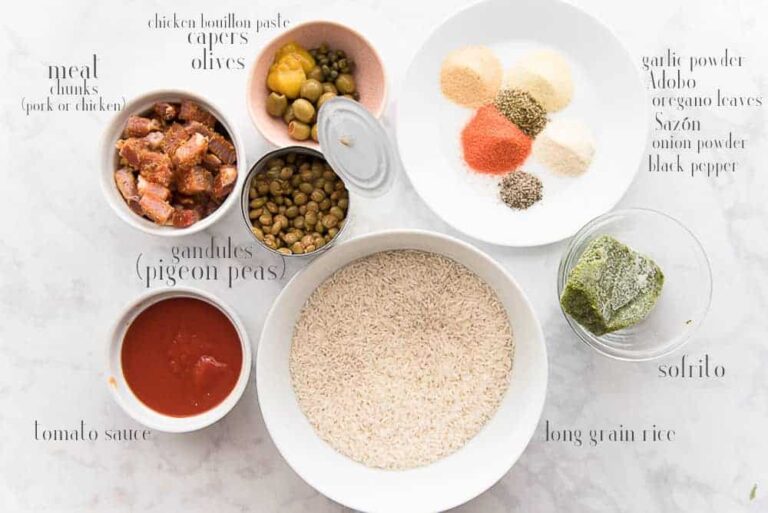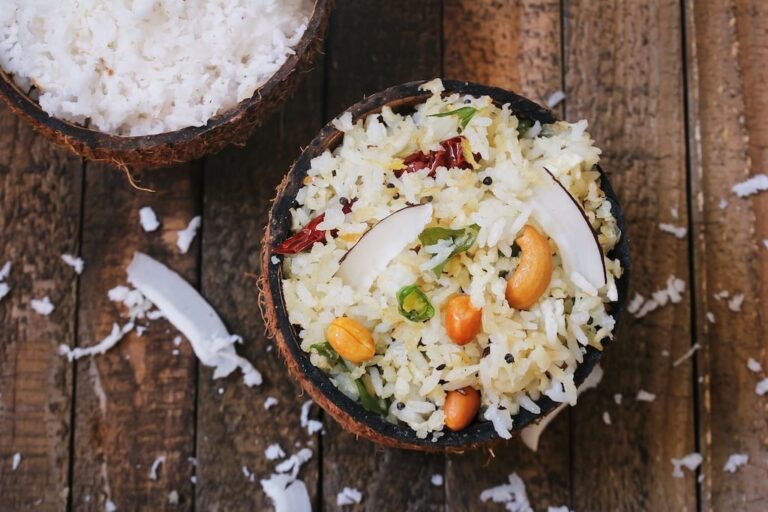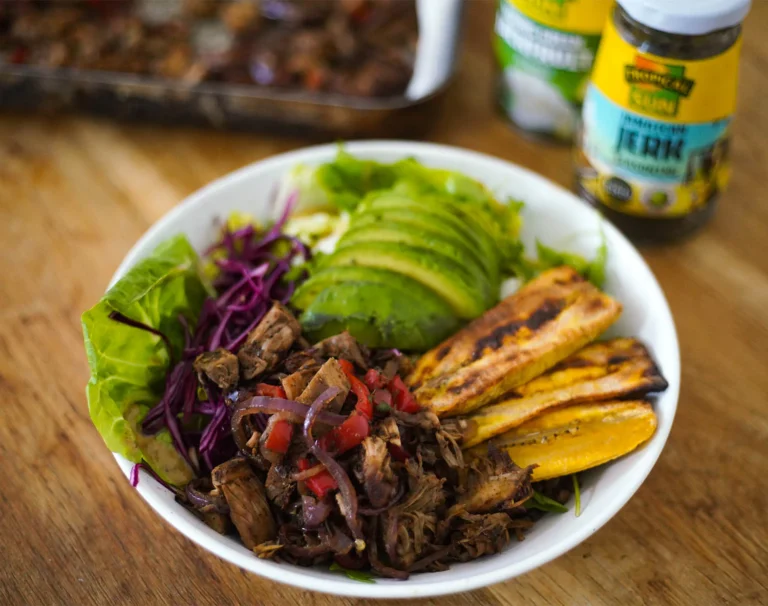Mofongo, with its tantalizing blend of flavors and cultural heritage, beckons food enthusiasts to the heart of Puerto Rican cuisine. This iconic dish, born from a fusion of African and Taino influences, transcends mere sustenance—it’s a celebration of history, community, and culinary artistry.
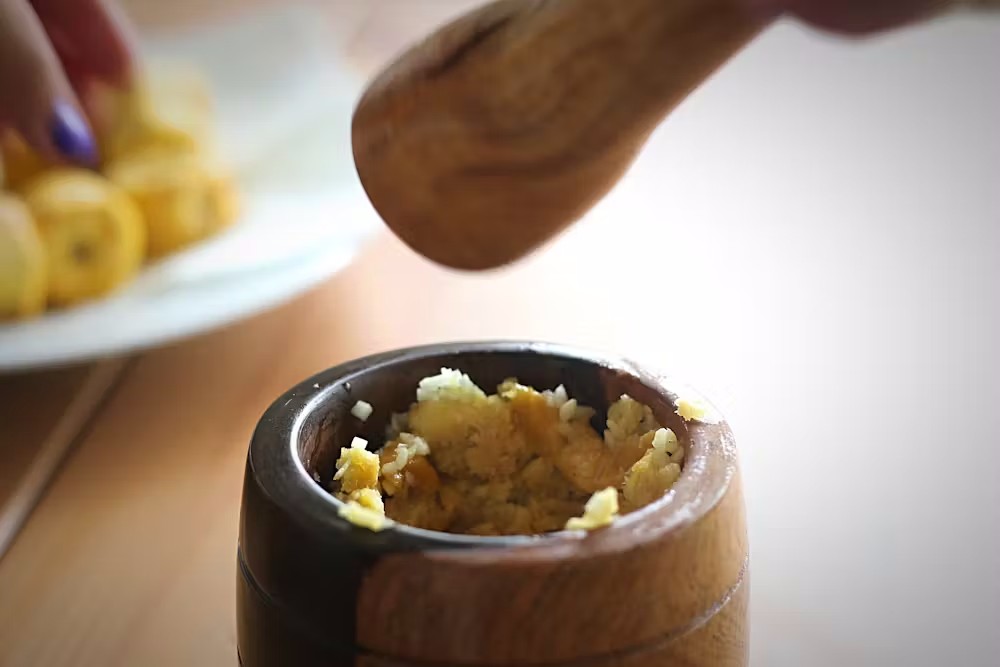
In this article, we’ll delve into the origins of mofongo, tracing its journey from humble beginnings to cherished family gatherings and bustling restaurants. We’ll explore the magic of green plantains, the rhythmic dance of spices, and the sizzle of hot oil. So buckle up because we’re about to embark on a flavorful adventure that will leave your taste buds dancing and your soul humming.
Historical Origins of mofongo
Mofongo, a beloved Puerto Rican dish, boasts a cross-cultural ancestry that weaves together influences from Taíno, African, Spanish, and North American traditions. To truly appreciate its origins, let’s step back in time:
African Roots:
- In the early 1500s, Spanish conquistadors arrived in Puerto Rico, subjugating the indigenous Taíno people. Many Taíno were forced to work on plantations and in gold mines.
- The green plantain, a versatile ingredient, became central to Puerto Rican cooking. The Taíno had already been using plantains in their own culinary practices.
- Mofongo evolved as a fusion of these diverse elements: starchy plantain, African techniques, and Spanish colonial influence.
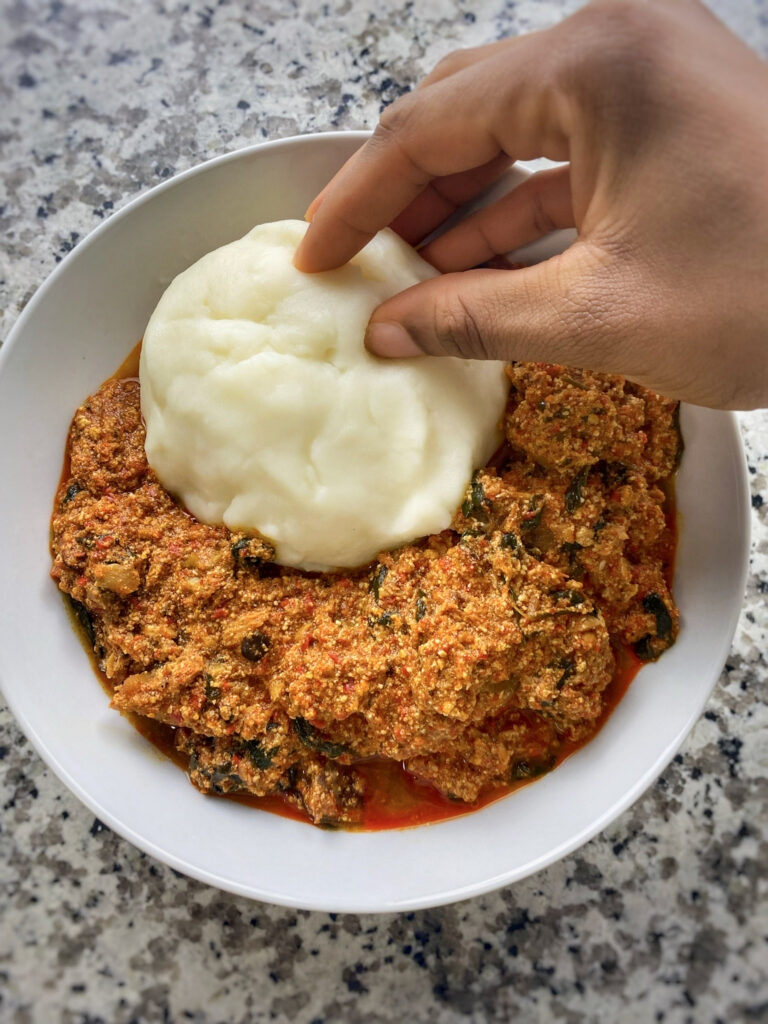
Spanish Conquistadors and Taíno Influence:
- In the early 1500s, Spanish conquistadors arrived in Puerto Rico, subjugating the indigenous Taíno people. Many Taíno were forced to work on plantations and in gold mines.
- The green plantain, a versatile ingredient, became central to Puerto Rican cooking. The Taíno had already been using plantains in their own culinary practices.
- Mofongo evolved as a fusion of these diverse elements: starchy plantain, African techniques, and Spanish colonial influence.
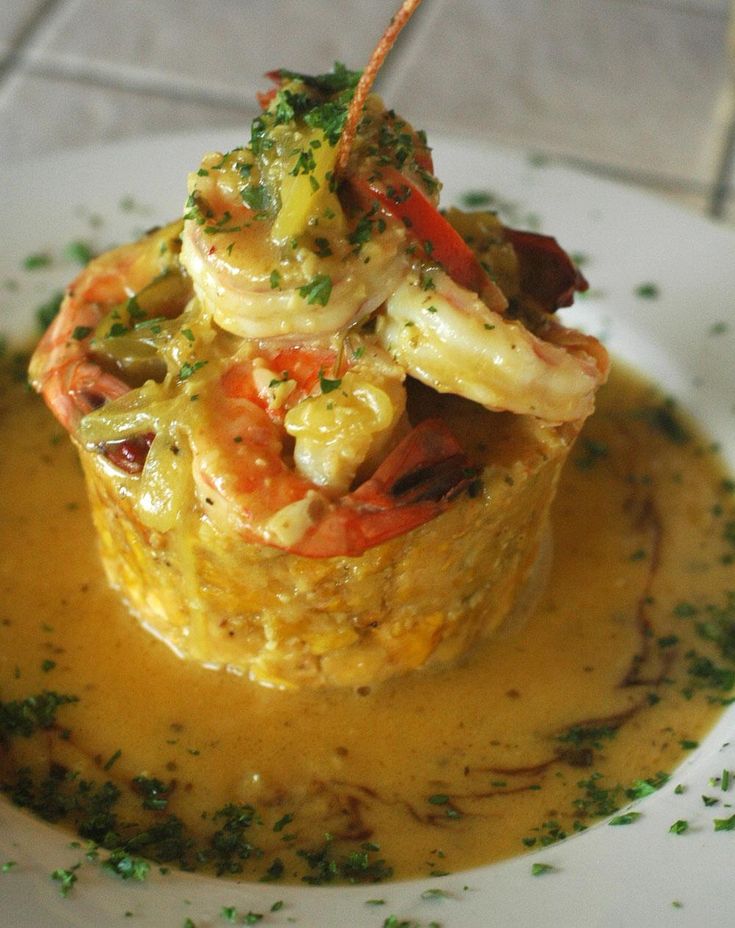
The Making of Mofongo:
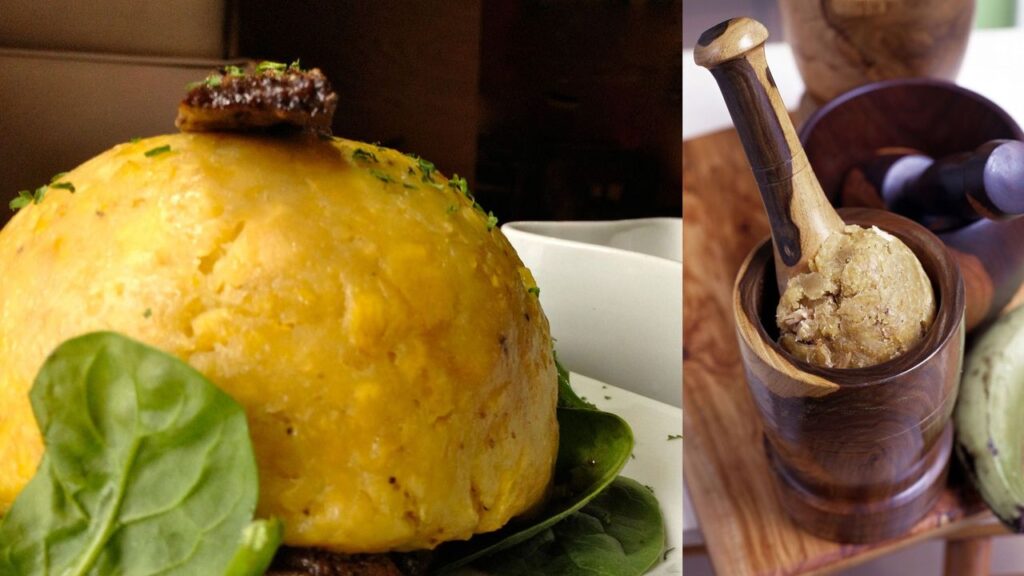
- Plantain Preparation:
- Green plantains are peeled and soaked in water to preserve their color.
- Deep-fried until they turn crunchy on the outside, the plantains become the foundation of mofongo.
- Mashing and Flavoring:
- In a traditional pilón (mortar and pestle), the hot fried plantains are smashed.
- Garlic, chicharrón (deep-fried pork skin), and other ingredients are added to taste.
- The goal is to maintain a balance: not mashing it completely to retain flavor and crispy texture.
- Serving Tradition:
- Mofongo is a celebratory dish enjoyed during special occasions or when you crave hearty comfort.
- While it’s not an everyday meal like rice and beans, it holds a special place in Puerto Rican hearts.
- Ideally, it’s served alongside a bowl of chicken broth, adding depth to the experience.
Ingredients
Mofongo, the heartwarming Puerto Rican delight, owes its irresistible flavor to a simple yet harmonious blend of ingredients. Let’s dive into the essential components:
Green Plantains:
- Unripe green plantains take center stage. These starchy fruits are the building blocks of mofongo.
- They’re peeled, sliced into rounds, and then fried until golden and tender.
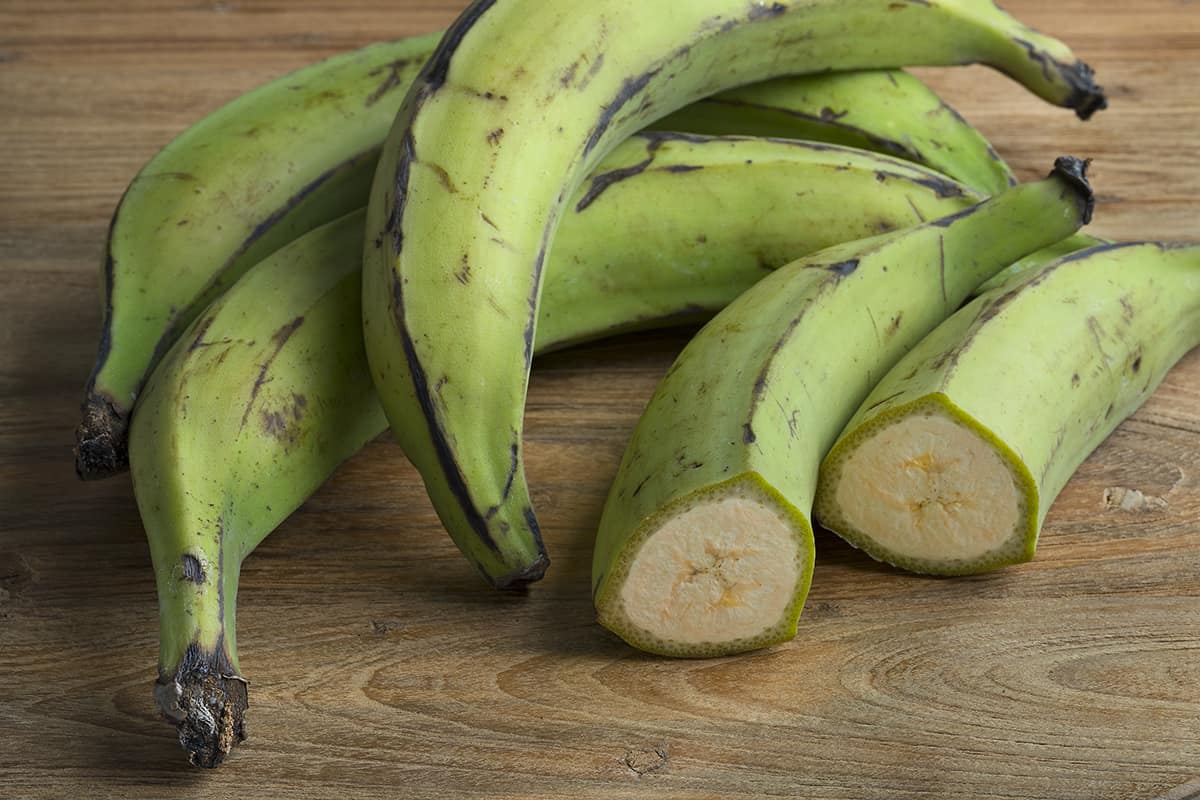
Garlic:
- Garlic adds depth and aroma. It’s mashed into a paste and becomes the flavor backbone of mofongo.
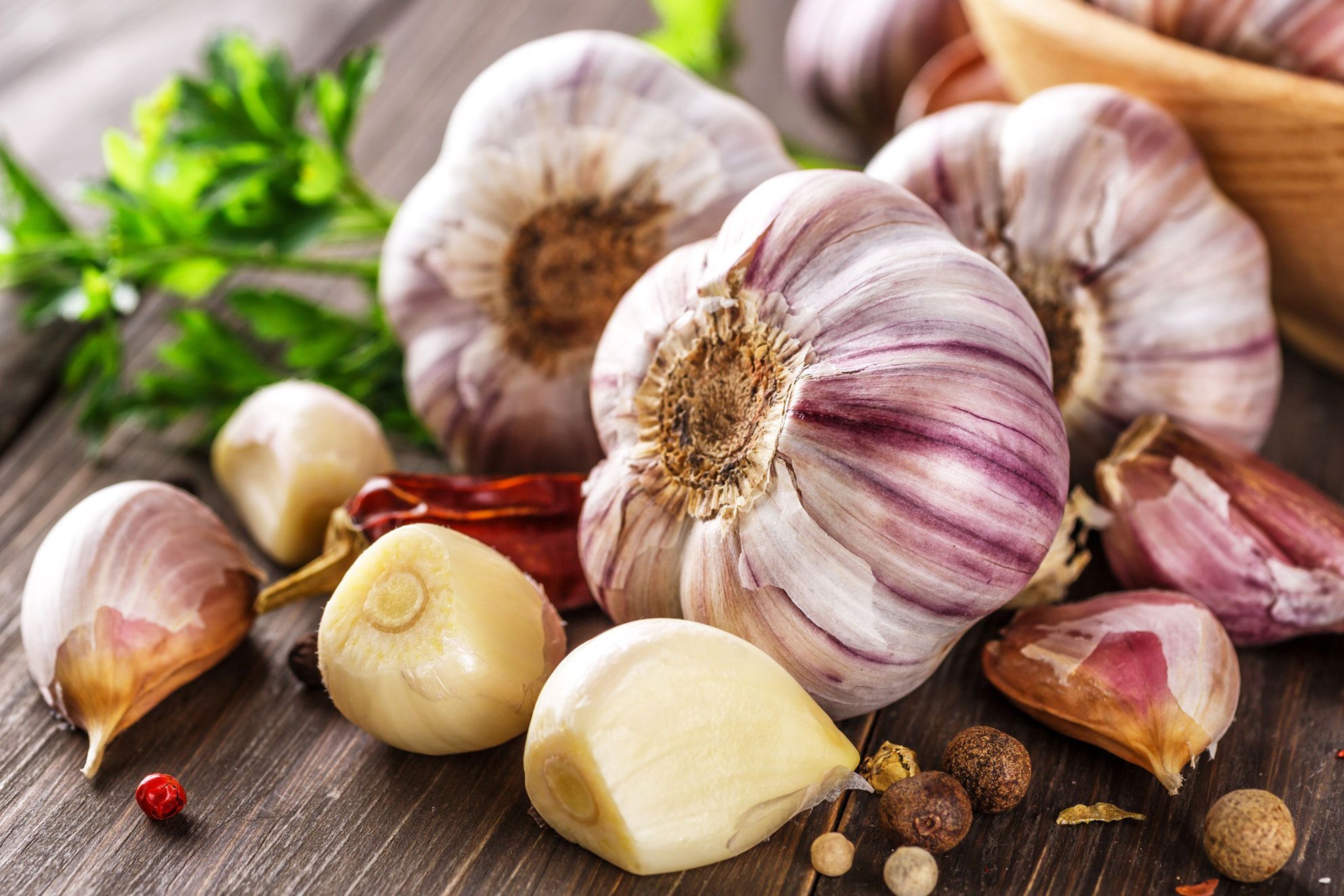
Pork Rinds (Chicharrón):
- The crispy, crackling goodness of pork rinds elevates mofongo to heavenly heights.
- Crushed pork rinds infuse each bite with savory delight.
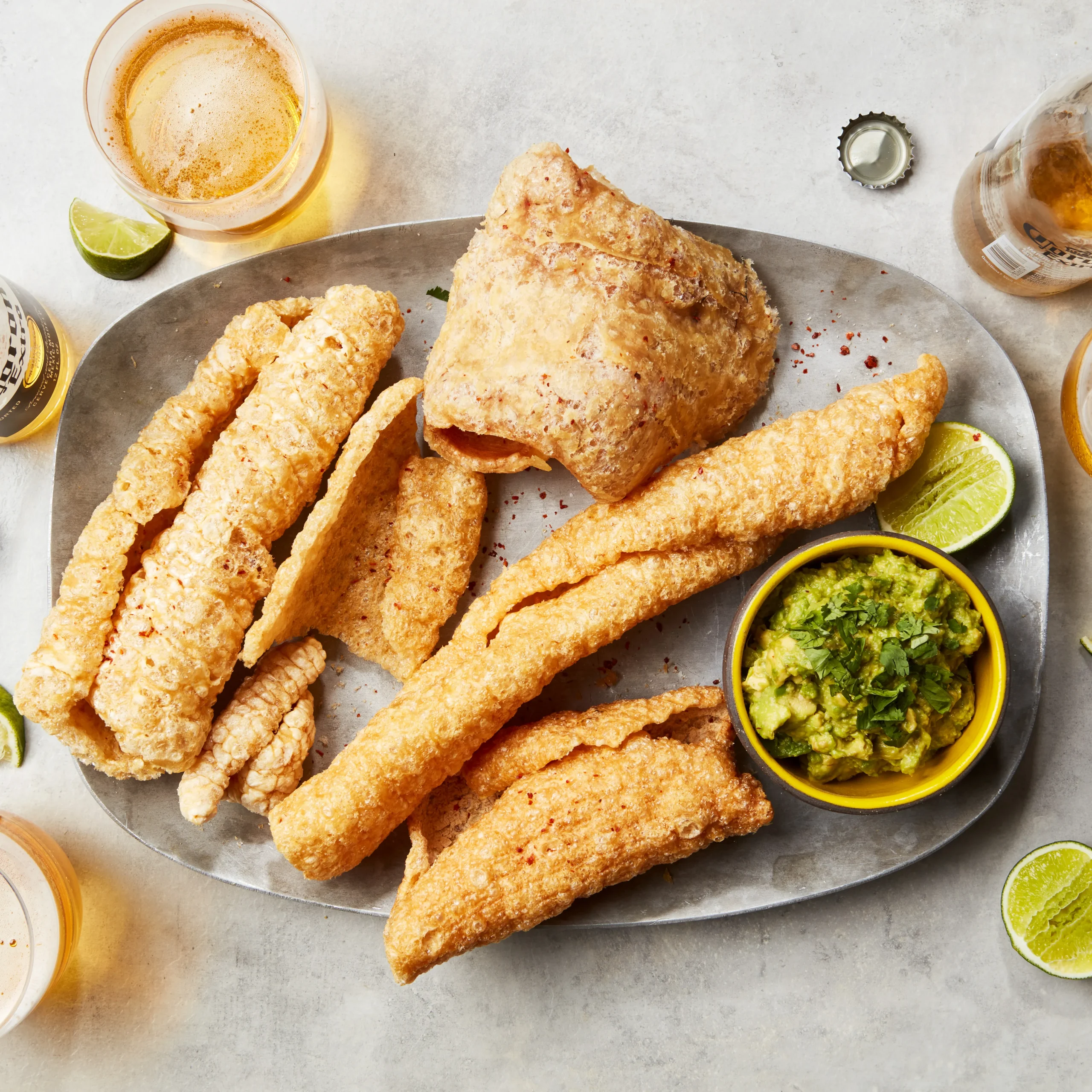
Olive Oil:
- A drizzle of olive oil brings richness and silkiness to the dish.
- It enhances the overall texture and flavor profile.
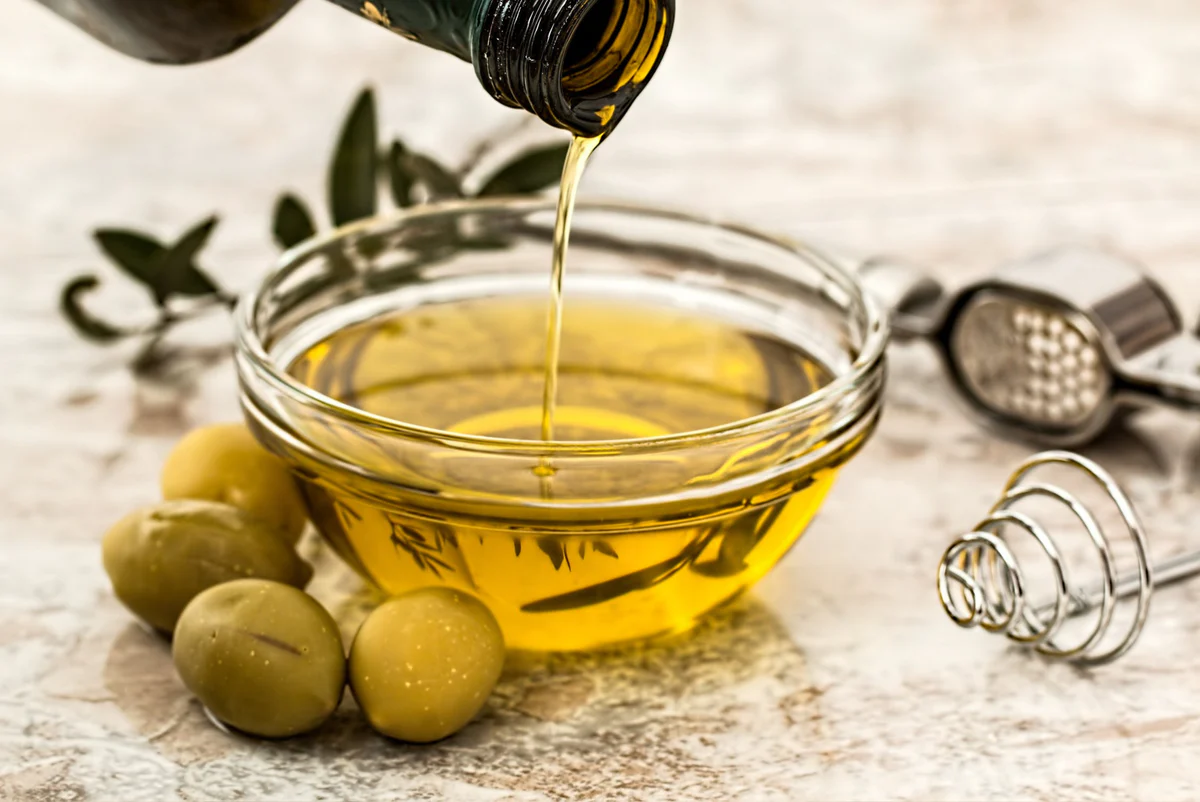
Salt:
- A pinch of salt ties everything together, balancing the sweetness of the plantains and the savory elements.

Variations:
- While the classic mofongo sticks to these core ingredients, adventurous cooks may explore variations:
- Yucca Mofongo: Swap plantains for yucca (cassava) for a twist.
- Sweet Plantain Mofongo: Use ripe, sweet plantains for a different flavor profile.
Preparation
Mofongo, the soul-warming dish of Puerto Rico, comes to life through a simple yet captivating preparation process. Let’s dive into the steps that transform humble ingredients into a flavorful masterpiece:
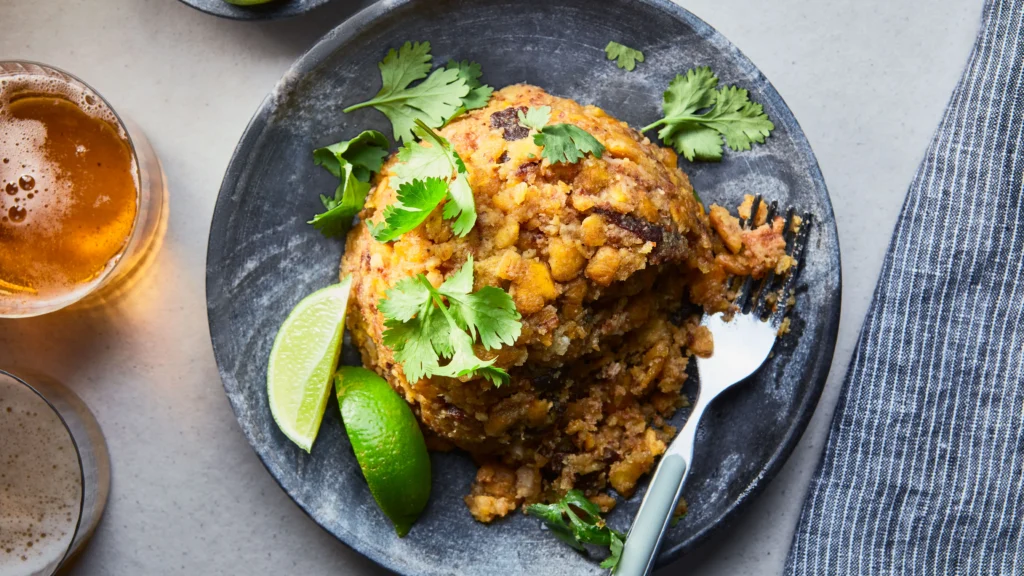
- Frying the Plantains:
- Heat vegetable oil in a large skillet or deep fryer over medium-high heat until it reaches 350°F.
- Peel three medium green, unripe plantains and cut them into 1-inch rounds.
- Fry the plantains until they turn golden and tender, which takes about 4 to 6 minutes.
- Remove the cooked plantains from the oil and place them on a paper-towel-lined plate.
- Mashing and Mixing:
- In a large bowl or mortar and pestle, combine the fried plantains with one tablespoon of garlic paste.
- If necessary, mash the plantains in batches until they form a cohesive mixture.
- Add 6 ounces of pork rinds or cracklings, crushed for extra flavor.
- Continue to thoroughly mash and mix until all the ingredients blend harmoniously.
- Season with kosher salt to taste.
- Shaping the Mofongo:
- Shape the mofongo into four balls, or consider a half-dome shape using a small condiment bowl as a mold.
- For the half-dome shape, push a portion of mofongo down to the bottom of the bowl.
- The choice of shape is yours—both are equally delightful.
- Serving and Enjoying:
- Serve the mofongo balls or half-domes as a side dish or a main course.
- Pair them with proteins like chicken, shrimp, or beef.
- Consider adding a flavorful broth poured over the top for an extra layer of satisfaction.
Flavor Profile
Mofongo tantalizes the taste buds with a harmonious blend of flavors and textures. Let’s explore its delightful characteristics:
1. Savory and Comforting:
- Mofongo is inherently savory, thanks to ingredients like garlic, pork cracklings, and olive oil.
- Each bite offers a comforting warmth that resonates with Puerto Rican culinary traditions.
2. Plantain Magic:
- The star of the show is the green plantain. When fried and mashed, it transforms into a flavorful base.
- Plantains contribute a mild sweetness akin to bananas but with a starchy twist.
3. Crunch and Creaminess:
- The crunchy pork cracklings (chicharrón) add an irresistible texture.
- As you savor mofongo, you’ll encounter moments of creamy plantain interspersed with crispy bits.
4. Versatility:
- While often served as a side dish, mofongo can easily take center stage as a main course.
- Pair it with meats like chicken, shrimp, or beef for a complete meal.
Cultural Significance of Mofongo
Mofongo, Puerto Rico’s unofficial national dish, transcends mere sustenance—it embodies the island’s heart and soul. Let’s explore its cultural significance:
1. A Culinary Melting Pot:
- Mofongo represents the complex history of Puerto Rico, where different backgrounds converge.
- It’s a testament to the fusion of African, Spanish, and indigenous Taíno influences.
2. Symbol of Unity:
- When you savor mofongo, you taste the resilience of a people who endured colonization, slavery, and cultural exchange.
- It’s a dish that brings families together and shared during celebrations, gatherings, and Sunday brunches.
3. Uniquely Puerto Rican:
- Mofongo isn’t just food; it’s an expression of identity. It’s what locals proudly serve to visitors.
- Its simplicity and depth mirror the island’s spirit—bold, flavorful, and unapologetically authentic.
Modern Adaptations
Mofongo has evolved over time, adapting to contemporary tastes and culinary creativity:
1. Filled Mofongo (Mofongo Relleno):
- Beyond the classic version, filled mofongo steals the spotlight.
- Imagine a mound of mashed plantains cradling juicy meats, succulent seafood, or vibrant vegetables.
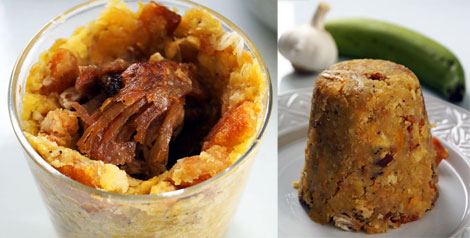
2. Mofongo Mixto and Bifongo:
- Mofongo mix combines green plantains with sweet plantains or other root vegetables.
- Bifongo adds a delightful twist by mixing green plantains with yuca or breadfruit.
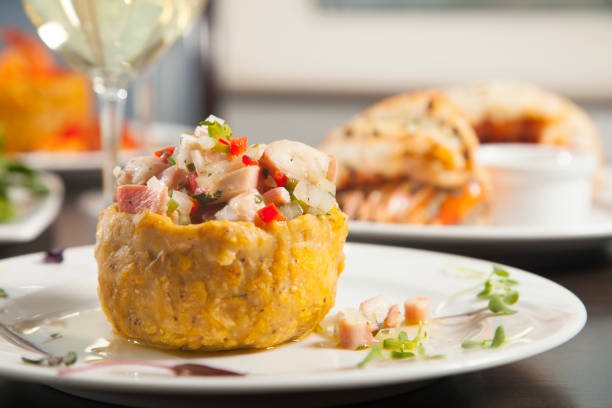
3. Trifongo:
- For the adventurous palate, there’s trifongo—a harmonious blend of green plantains and two other starches.
- Each variation celebrates Puerto Rico’s culinary ingenuity.
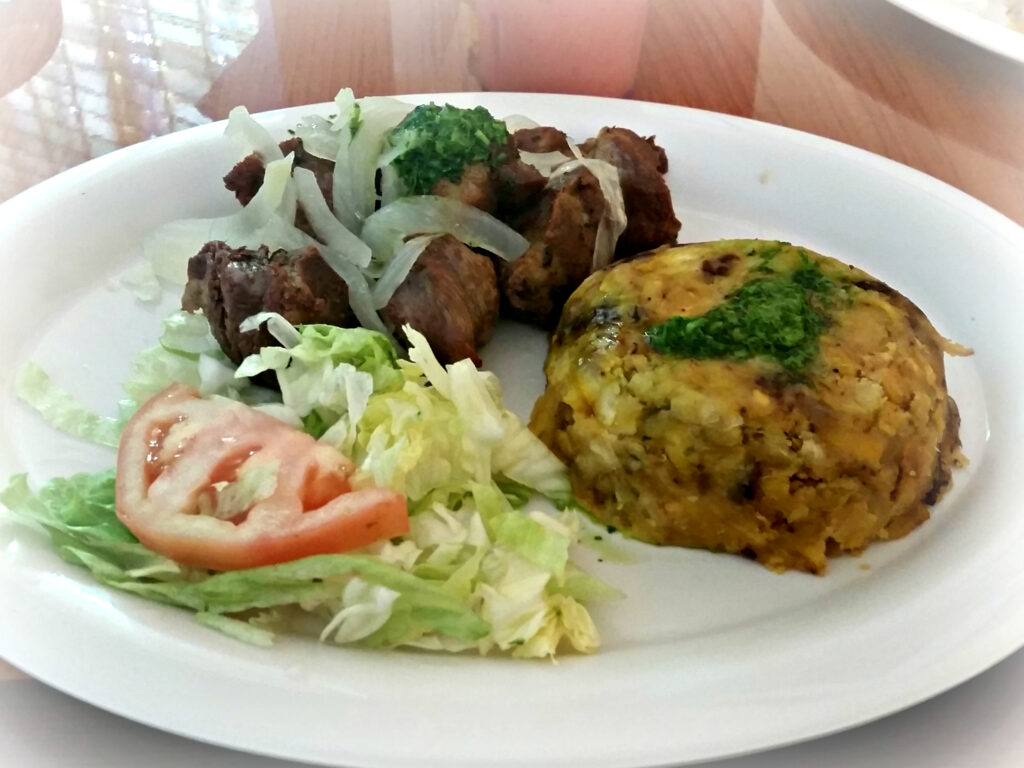
Final Analysis
As our flavorful journey through the origins of mofongo draws to a close, let’s linger a moment longer. Beyond the mortar and pestle, beyond the sizzle of garlic, lies a deeper resonance—a lesson for both our culinary endeavors and life itself. Mofongo teaches us that beauty emerges at the crossroads of cultures.
Just as green plantains absorb the wisdom of Africa, Spain, and the Taíno, our lives flourish when we blend diverse experiences. Seek inspiration beyond borders; let your creativity simmer in the melting pot. The imperfectly mashed mofongo balls remind us that perfection isn’t the goal. Life, like this dish, is a delightful mix of textures—sometimes smooth, sometimes crunchy. Embrace the lumps, the cracks, and the unexpected bursts of flavor. They make the journey memorable.
Mofongo isn’t meant for solitary indulgence. It’s a communal experience—a plate passed around, laughter echoing, stories exchanged. In life, too, our joys multiply when shared. Serve up kindness, empathy, and a warm smile. The more you give, the richer your feast. So, as you savor your next mofongo, remember: it’s not just food; it’s a lesson on the art of living.
Disclosure: Our blog contains affiliate links to products. We may receive a commission for purchases made through these links. However, this does not impact our reviews and comparisons. We try our best to keep things fair and balanced, in order to help you make the best choice for you.
